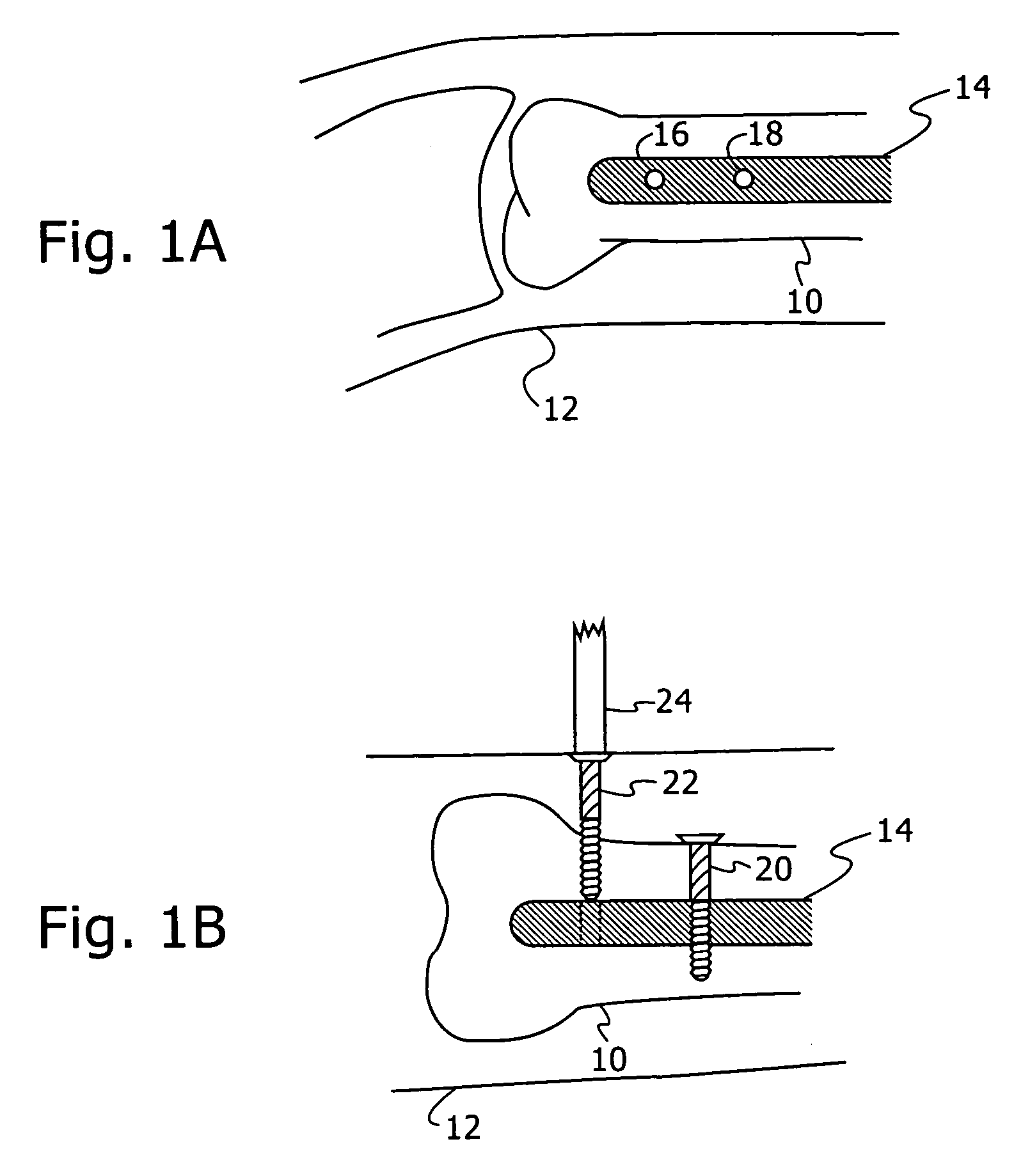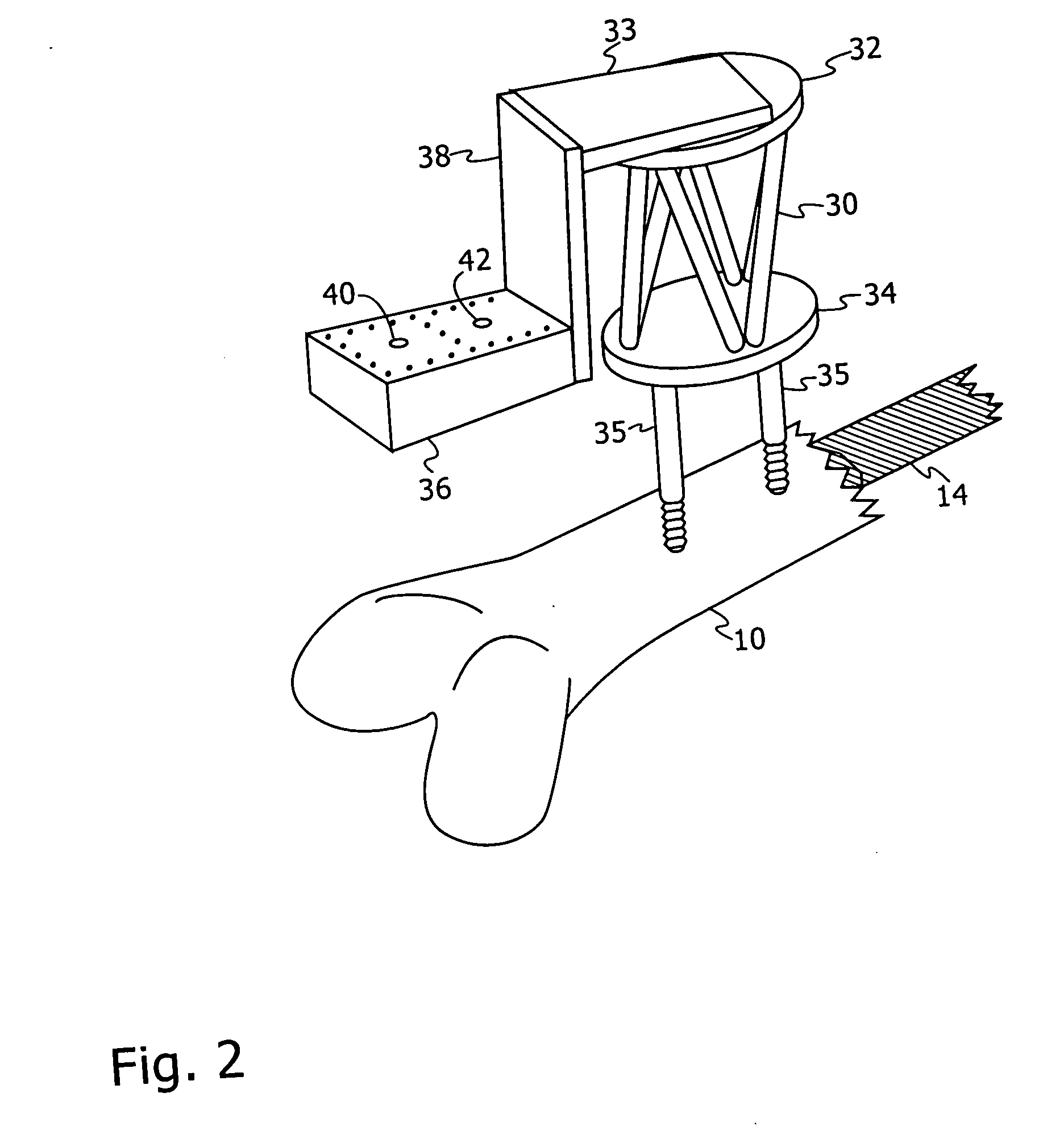Robot for use with orthopaedic inserts
a robotic and insert technology, applied in the field of robotic guidance of orthopaedic surgical procedures, can solve the problems of significantly reducing the likelihood of complications in the procedure, and achieve the effects of reducing the likelihood of complications, and convenient rendering
- Summary
- Abstract
- Description
- Claims
- Application Information
AI Technical Summary
Benefits of technology
Problems solved by technology
Method used
Image
Examples
Embodiment Construction
[0049] Reference is first made to FIGS. 1A and 1B, which are schematic representations of views that would be obtained by X-ray fluoroscopic imaging, illustrating the distal locking stage of the intramedullary nailing procedure. FIG. 1A is representative of a lateral image and FIG. 1B a frontal image, of the distal part of the femur 10, showing the intramedullary nail 14 with two distal locking nail holes 16, 18. The nail 14 is inserted through a minimal opening, usually in the proximal part of the bone 10, without the need to surgically expose the fracture.
[0050] In performing the procedure, the surgeon first reduces the fracture by manipulating the proximal and distal bone fragments through the leg 12 until they are aligned. The surgeon then inserts a guide wire, reams the canal if necessary, and drives in the nail 14. The surgeon then drills the appropriate distal locking nail holes in the bone, opposite the pre-prepared holes 16, 18 in the nail, and inserts lateral proximal and...
PUM
 Login to View More
Login to View More Abstract
Description
Claims
Application Information
 Login to View More
Login to View More - R&D
- Intellectual Property
- Life Sciences
- Materials
- Tech Scout
- Unparalleled Data Quality
- Higher Quality Content
- 60% Fewer Hallucinations
Browse by: Latest US Patents, China's latest patents, Technical Efficacy Thesaurus, Application Domain, Technology Topic, Popular Technical Reports.
© 2025 PatSnap. All rights reserved.Legal|Privacy policy|Modern Slavery Act Transparency Statement|Sitemap|About US| Contact US: help@patsnap.com



